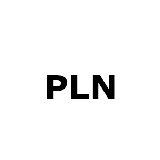Contributors: Corey Davis, Chelsea Denault, Rebecca Dickson, Thib Guicherd-Callin, Charles Johnson, Anthony Leroy, Miguel Angel Mardero Arellano, Jamen McGranahan, Aaron Trehub, Hannah Wang, and Alicia Wise, CLOCKSS
LOCKSS stands for “Lots of Copies Keep Stuff Safe”. Many people in the international digital preservation community will recognize this as the name of the open source preservation software developed at Stanford University Library.
But did you know that LOCKSS is also shorthand for a community of varied distributed preservation services all operating on LOCKSS software? Sometimes called Private LOCKSS Networks or PLNs, these preservation services are: the Alabama Digital Preservation Network (ADPNet), Cariniana in Brazil, CLOCKSS, the MetaArchive Cooperative, the Michigan Digital Preservation Network (MDPN), the SAFE Archive Federation serving 7 universities in Europe and Canada, the US Digital Federal Depository Library Program which preserves government documents published on the US govinfo site (USDOCS), the CGI Preservation Network in Canada, Perma.cc, the Public Knowledge Project Preservation Network (PKP PN), and COPPUL’s WestVault. And just to make things a bit more confusing, it is also shorthand for the Global LOCKSS network which provides digital preservation services and a mechanism for building local collections of web-based scholarly open access publications in a wide array of academic libraries.
The general model is the same for each service in this community of preservation: multiple geographically distributed preservation nodes run the LOCKSS software, each uses a crawler to obtain a copy of the target content for preservation, then these are stored on servers participating in the LOCKSS polling and voting protocol to establish consensus on the authenticity and integrity of that content. When one of these servers detects damage to its preserved copy, it fetches repairs from the original source or from a proven peer.
What varies greatly from one PLN to another are governance and policy matters: the users of the preservation network, the content that is in scope, who operates the service, who has access to the preserved content and under what circumstances, who provides financial backing for various kinds of costs, what services beyond preservation are provided (e.g. bibliographic metadata, usage reports, etc.)
The content in each LOCKSS network is equally important for ensuring community resilience and sustainability by preserving mission-critical data and important cultural memory materials.. For example, ADPNet and MDPN are preserving unique, highly-local digital content originating in their states/regions on behalf of a diverse group of users including small, underfunded community archives. MetaArchive covers a similar breadth of content, with a larger geographic scope. SAFE is a multinational archive protecting university-generated information of national importance in multiple countries. CLOCKSS is an international archive focused on formally published scholarly content originating anywhere in the world and of interest to research libraries. Some LOCKSS networks also preserve government documents at a national and local level, promoting accountability, transparency, and community resilience.
The LOCKSS software is a versatile preservation solution with an active community of users that have leveraged its diverse features to meet various needs or requirements. . The LOCKSS software accommodates locally developed enhancements and add-ons, which can then be contributed back to the LOCKSS community. For example, ADPNet has recently developed drag-and-drop services for adding content to a LOCKSS network and SAFE developed a graphical management dashboard that shows the overall state of the network and its nodes at a glance. Improvements to the deployment and service of the LOCKSS software are part of the recent LOCKSS 2.0/LAAWS (LOCKSS Architected as a Web Service) initiative. The PLN community works cooperatively with the LOCKSS program to drive the ongoing development and re-design of the LOCKSS software to meet changing user needs and expectations.
Together these networks - and the libraries, archives, and publishers who support them - are contributing to the sustainability of the LOCKSS software and also the content preserved by it. Neither the software nor the preservation services are independent of one another and, although each part is powerful, the collective is more powerful than the sum of its parts. These community-owned-and-controlled networks of preservation services, collectively preserve hundreds of terabytes in a sustainable way. One challenge we face as separate networks, however, is communicating our long record of successes in a unified way.
LOCKSS software has been used successfully by our diverse networks for more than 20 years, and we are committed to working together to demonstrate the scalability, sustainability, usability, and viability of LOCKSS (both the community and the software) for preservation. This blog post is one of our first attempts to resume our efforts to communicate more!










































































































































